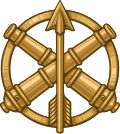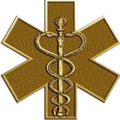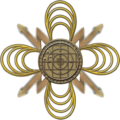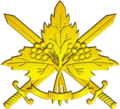This article needs additional citations for verification .(April 2014) |
Branch insignia of the Ukrainian Armed Forces refers to one of several military emblems that may be worn on the uniform of the Ukrainian Armed Forces to denote membership in a particular area of expertise.





































